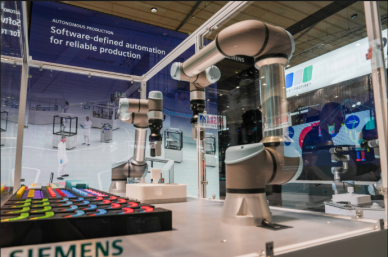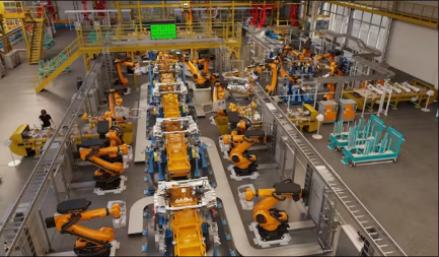Siemens Reshaps Global Industrial Landscape: AI and Digital Twin Technologies Drive a New Paradigm of Industrial Revolution
Against the backdrop of the accelerated restructuring of the global industrial landscape in 2025, German industrial giant Siemens is using artificial intelligence (AI) and digital twin technology as its core to reconstruct the full chain production paradigm from discrete manufacturing to process industry. From the release of the industrial AI ecosystem at the Hanover Industrial Fair to the joint construction of the world's first virtual PLC factory with Audi, Siemens is leading the global industry towards the strategic goal of "ONE Tech Company" through technological integration and ecological expansion.

2、 Ecological Expansion: From Open Platforms to Vertical Industry Solutions
The Siemens Xcelerator platform has become the core carrier of the industrial AI ecosystem. The platform has added 7000 professional talents to the "Accenture Siemens Business Group", deeply integrating industrial automation, software, and data science capabilities. For example, in the chemical industry, the digital twin system jointly developed by both parties can predict pressure fluctuations in reaction vessels and reduce accident rates by 85%; In the energy sector, by integrating with Amazon Web Services (AWS), Siemens' digital building platform Building X achieves real-time iteration of energy optimization algorithms, reducing commercial building operating costs by 30%.
Siemens has also launched the "Start up Support Program" to provide small and medium-sized enterprises with access to the Xcelerator platform and AWS service points deduction. The program has incubated Norwegian agricultural technology company Desert Control, which is based on Siemens Industrial Operations X's desertification control solution and uses soil moisture AI prediction models to increase crop survival rates to 92%.

3、 Industry Transformation: From Intelligent Manufacturing to Sustainable Infrastructure
In the field of intelligent manufacturing, Siemens CNC system SINUMERIK 828D achieves full process digital twin coverage. The system is equipped with a new generation processor architecture, which improves computing efficiency by 40% and supports 3D path generation technology for multi axis additive manufacturing equipment. For example, in the manufacturing of medical equipment, its intelligent knife path analysis software has reduced the scrap rate of artificial joint processing from 15% to 0.8%, and achieved full lifecycle tracking of carbon footprint.
Sustainable infrastructure has become a key focus of Siemens' technology output. The smart grid monitoring system jointly developed by the company and Dubai Cable has realized the dynamic prediction of cable load through AI edge computing, reducing the power grid loss in the Middle East by 22%. In the transportation sector, Siemens provided a digital twin maintenance solution for Amtrak, a US railway company, which increased the accuracy of train fault prediction to 99.2% and saved over $120 million in annual maintenance costs.

4、 Strategic Depth: From Organizational Structure Adjustment to Global Capital Operations
Siemens Chairman Boren announced at the shareholders' meeting that revenue for the first quarter of fiscal year 2025 increased by 3% year-on-year to 18.4 billion euros, with free cash flow reaching 1.6 billion euros. This growth is due to the increase in revenue from the software business of the Digital Industry Group, as well as the after tax profit of 2.1 billion euros from the sale of the Inmonda motor business. To focus on its core business, Siemens plans to invest 3 billion euros in AI and industrial metaverse technology research and development over the next three years, and establish a global R&D center in Berlin, Germany, with a focus on the integration of quantum computing and industrial AI applications.
In the capital market, Siemens announced a € 6 billion stock buyback plan to boost investor confidence. Meanwhile, its technological cooperation with companies such as Schneider Electric and ABB continues to deepen. For example, in the field of hydrogen energy, the electrolytic cell digital twin system jointly developed by Siemens and ThyssenKrupp has increased hydrogen production efficiency to 83%, which is 18 percentage points higher than traditional processes.